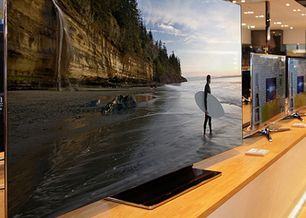Have you heard of 10mbps, or 100mbps switches and networks? If you ever purchased a dumb switch for your network you may have seen these metrics on boxes. Today, you can also see switches that support 1000mbps (also known as Gigabit enabled devices) on shelves of every electronic store. Gigabit networks are not a new technology. In fact currently there are multiple gigabit devices or even 10Gig devices that can be obtained at reasonably convenient prices. But these devices are not on the shelves of retail stores. They are mostly used in data centres or for business operations that require media handling or has a great deal of requests to web server or other business related operations.
Gigabit networks may sound like a technology that is an overkill or very speedy but they are not really speedy and are already common place in many businesses and homes. If your business doesn’t have a Gigabit enabled cabling infrastructure or networking devices then your network is surely under performing. A 1000mbps switch supports 125 Mega Bytes Per second per port. A Mega Byte is a metric that most users associate with. For example a CD holds 750 Mega Bytes of data and a DVD holds 4.7 Giga Bytes which is 1024 * 4.7 = ~4812 Mega Bytes. So, let’s say you wanted to transfer a DVD worth of data within your own office and share it with one of your co-worker in a 50 foot distance. You will have to wait ~40 seconds for the data to transfer. This doesn’t take into effect the time your DVD reader has to read the data and the time the other computer stores the data into it’s own memory. So you are easily looking at a minute for transfer. Now, if you had a DVD-RW double layer that would be 9.4 GB and will take at least 2 minutes to transfer. What happens if it is a Blue Ray media that you want to share? an XL 4 layer Blue Ray media can store upto 128 GB of data. That will take over 17 minutes to transfer a movie or a film that your marketing department prepared. So, do you still think a Gigabit network is fast? Probably not. Yes, it is fast but if your network doesn’t support at least a Giga Bit today then your network is well behind in technology.
Any TV that that is produced today comes with HD video encoding and lots of the TVs allow for data networks to plug into TVs for media sharing. A network that support high bandwidth will allow for all devices to connect seamlessly without compromise of network integrity or speed. You do not have to steal bandwidth from one device or one computer to give to a TV if you have Cat5e or better Cat6 cabling infrastructure in place.
HD TVs are just the beginning of a connected bandwidth hungry world that we are heading into. Many appliances such fridges, stoves, microwaves, etc…can be plugged into a smart network today. Thermostats temperature control, shades controls, and many more devices can appreciate a cable that connects them to the network backbone in your office or home. Keeping up with technology requires a uniformed network that is capable of handling new technology. There is no debate that technology is the fastest industry. When we fall behind in technology our competitors win market share. So, why loose market share and why be happy with less bandwidth speed when the technology is available to use? Return on investment for a solid network is one of the easiest rational you can bring to your budgeting officer.
